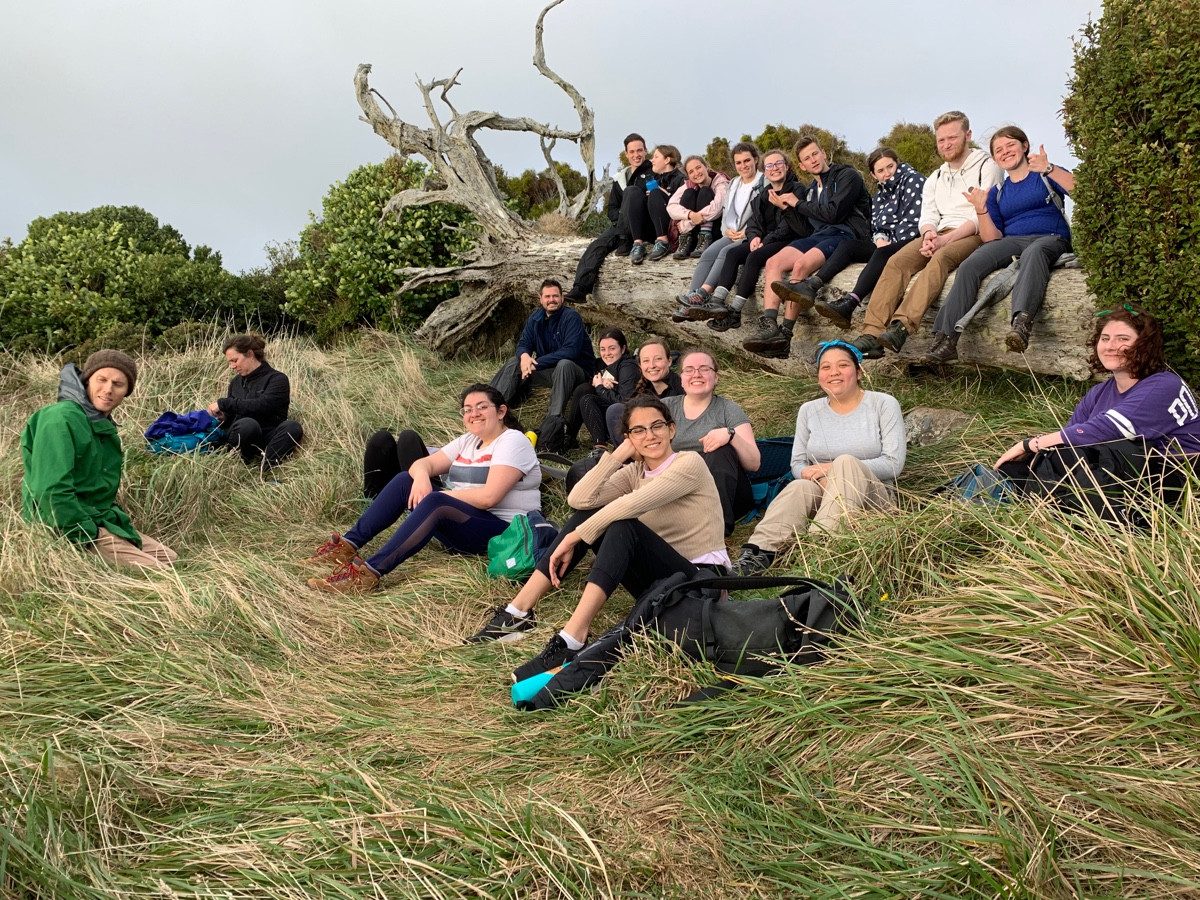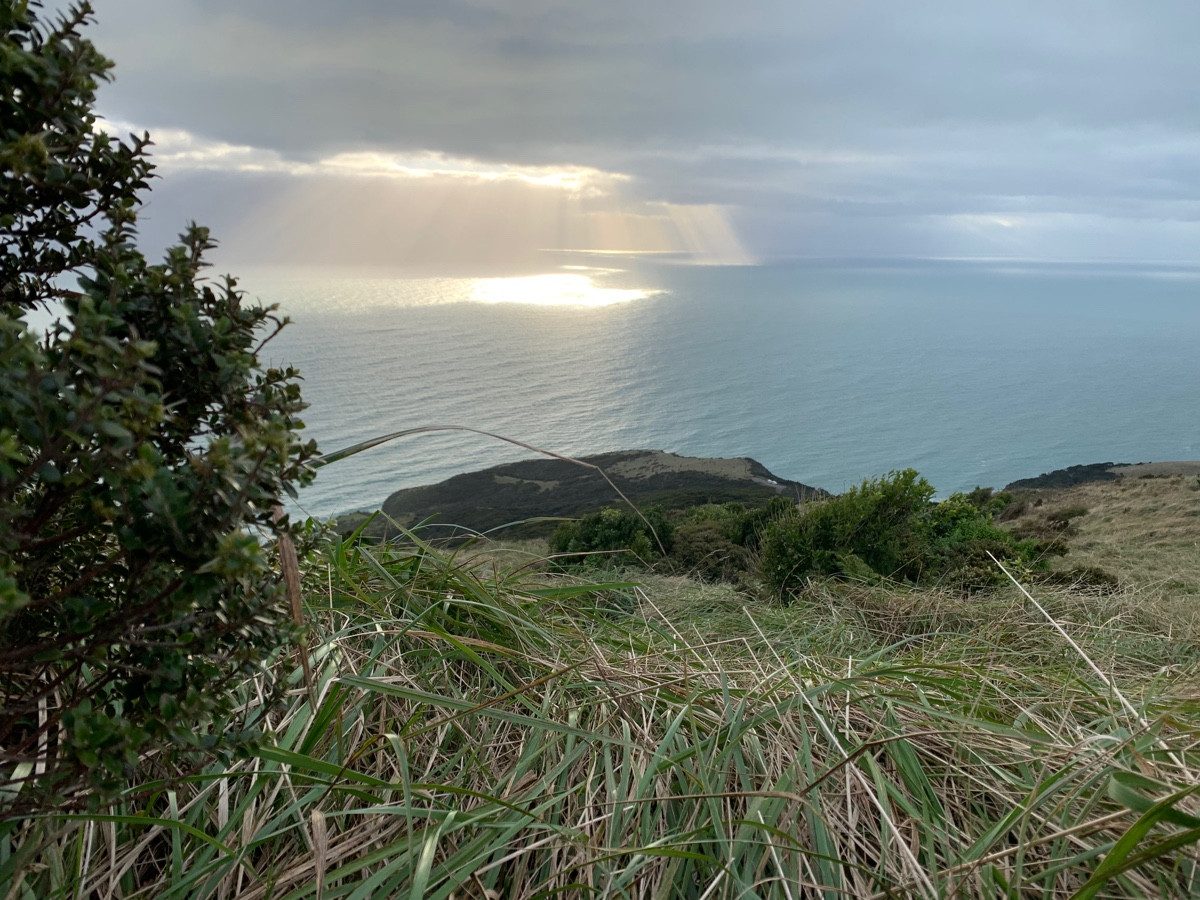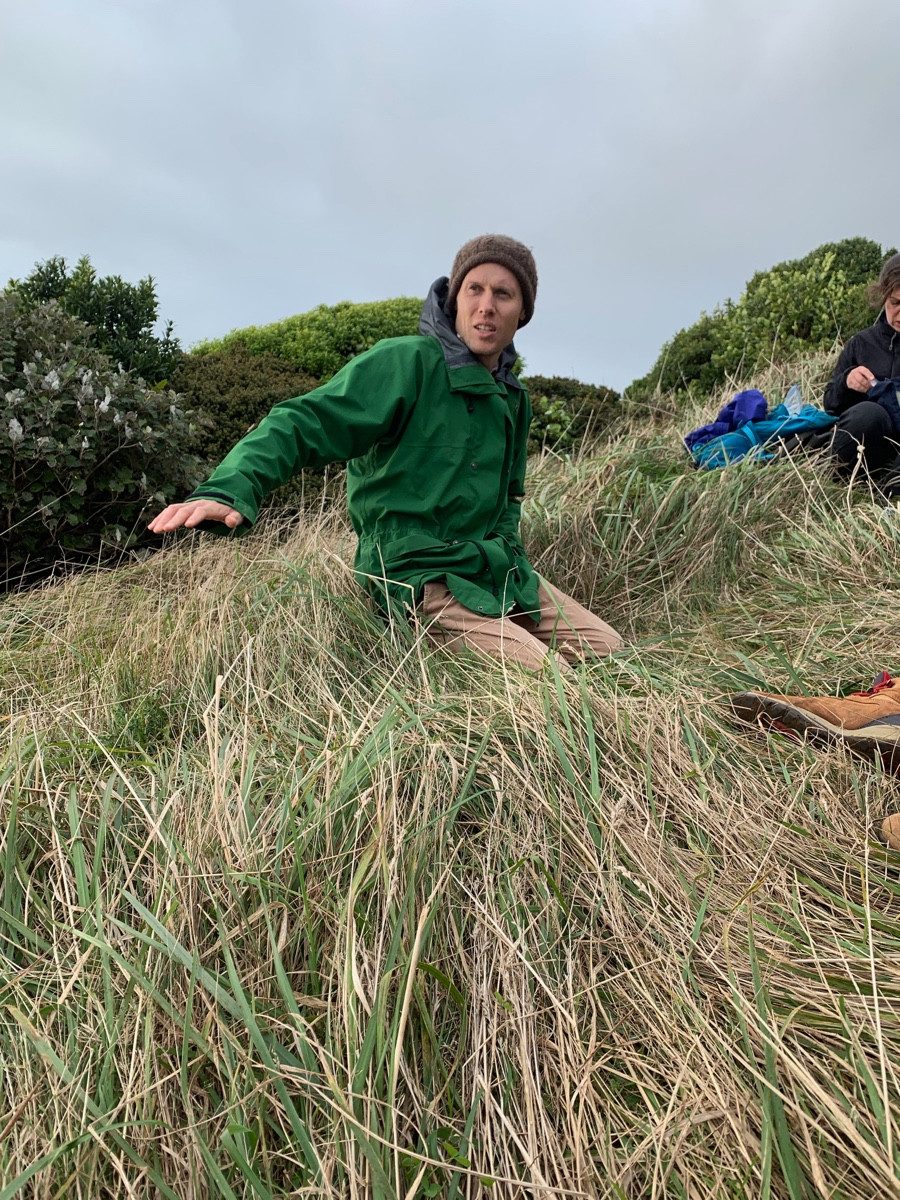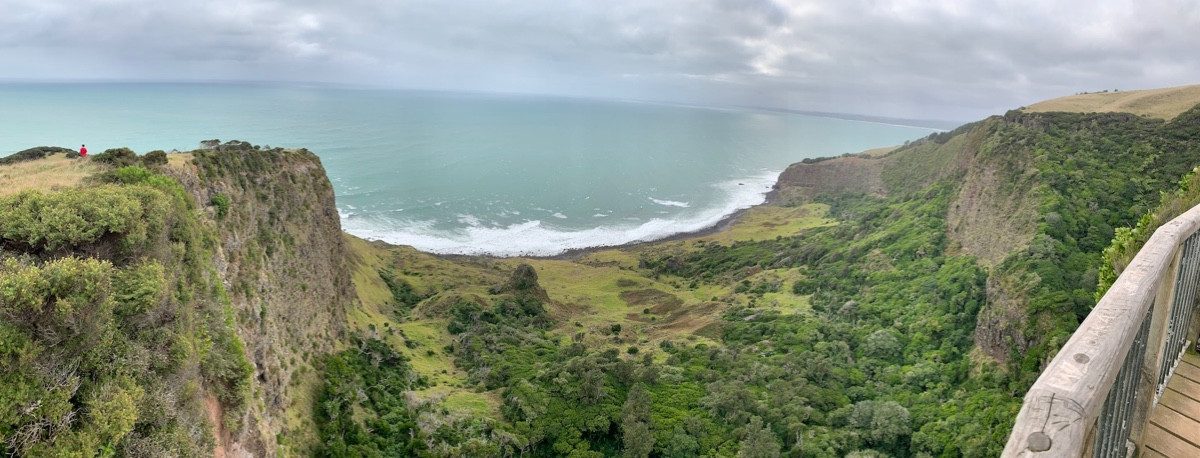
Author: Ariana Lopez
My first morning at the Kokori– our second marae – started in an ideal way: exercising right by the beach. After a couple of workouts, good music, and a short run with Harrison, Annie, and Delanie, we prepared ourselves for the activity of the day.
After lunch, we headed to a viewpoint on Mount Karioi– a sacred Maori site – and were able to admire the incredible view of the ocean right in front of us and of the sun rays that reflected on the water. After sharing the importance and meaning of the site in the Maori culture, Tiaki invited us to hike to the not-the-very-top top of the mountain.
This hike was a short but challenging one. The path was completely uphill, muddy, and very slippery. However, it was important for us to do it because this same hike is one that many natives used to do during vision quests as part of a rite of passage. Adolescents between the ages of 13 and 15 would hike to the top of the mountain and reflect on themselves, their ancestry, and everything they knew. This reflection could be anywhere from 1 hour to 5 days long – however long it took them to have a revelation – and it was usually done without food or water for support.
Once at the top of the mountain, we began exploring the concept of mana. Manais the prestige or the aura that accompanies an individual everywhere they go. It can be sensed the moment they walk into a room and it can only be increased when uplifting others. In the same manner, a person’s manais damaged when they disrespect or injure others. Mana can also be thought of as mana atuaand mana tangata.Mana atua is the mana that we are born with. It is the manathat we are handed by god or gods just for being and it can be traced back to the ancestors of our ancestors. Mana atuais unchanging. It is everlasting. On the other hand, mana tangatais mana that we obtain as we go through life and integrate ourselves into society. This sense of manais affected by factors like our gender, our ethnicity, and our religion.
To be honest, manais an incredibly complex concept that can be best defined with personal examples. Every object and every person around us have mana; it just takes close attention to notice it. I saw manain Rosie going out of her way to give me medications, vitamins, and even garlic to chew as she helped me get better from the cold I had when we first arrived in New Zealand. I saw manain Dave as he helped me learn the basic notes on the ukulele. Allison, Arianna, and Siena show their manaevery time they listen to me rant nonstop about anything that crosses my mind. Every time that Heather and Suzannah help me during hikes when they see I’m struggling, they are showing their mana. The whakairos– the carvings – on the walls of the maraeswe have been staying at have manabecause of the stories they tell. Even water has manabecause it is the blood of Papatūānuku; water gives life.
Manadoesn’t always show itself in grand actions. Sometimes, it requires a close eye and a huge attention span to notice manain another. However, once the idea of mana enters your mind, it becomes a constant invitation to pay attention to the little things. The little things that others sometimes do although they won’t be necessarily celebrated or even noticed by all.
Everyone in the group was given approximately 40 minutes to individually spread out throughout the mountain and reflect on the questions: “who am I?” and “where do I get my mana atuafrom?”. Of course, we didn’t have 5 days to do this, but we were given enough time to at least begin installing the question in our consciousness and pondering on it.
To be completely honest, I couldn’t focus on the question for half the time I was up there on the hill and when I finally began concentrating on it, every possible answer I came up with was too complicated to even put into concrete words. Once the time was over, I couldn’t stop blaming myself for wasting my reflection time and letting my unrelated thoughts get the best of me. I remember Tiaki said that realizations don’t happen in the mind but in the spirit, and trying to figure out what this meant was the most recurring thought I had during my 40 minutes of reflection time. However, it was right up there at the top of that hill where I learned that I don’t actually know where I get my mana atuafrom or how the ancestors of my ancestors contribute to who I am as a person today or even who I really am. From Tiaki’s words I also learned that all of this is okay. Surprisingly, it is okay to not have these answers right at our fingertips yet and now knowing this, I can wake up every morning from now on with a purpose. I want to live every day with the intention of finding out who I am and the effect that I have on those around me and the world. Even if I wake tomorrow still not having a clear, concrete answer, I know that I have a whole lifetime to find it.
P.S. to my family and friends: I think about you all every day and I miss you tons. I can’t wait to go back and show you all the pictures I’ve taken and share with you what I’ve learned. Los amo!


